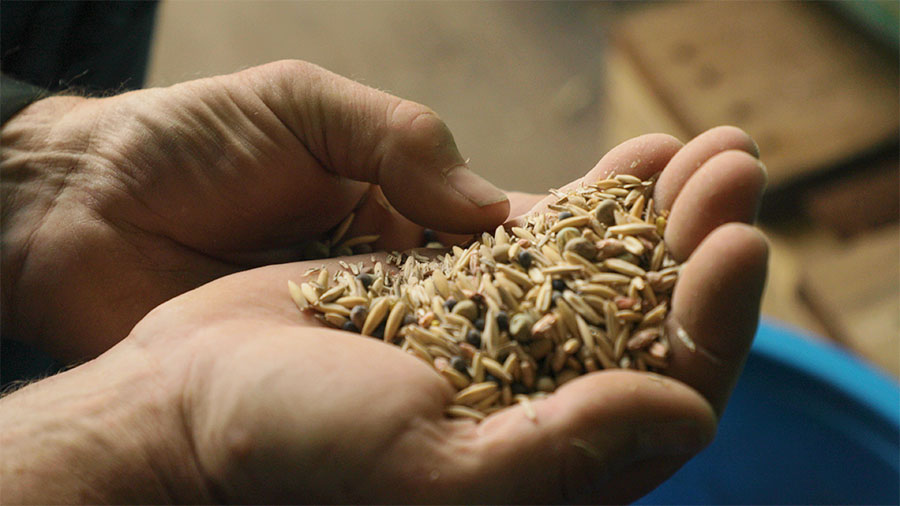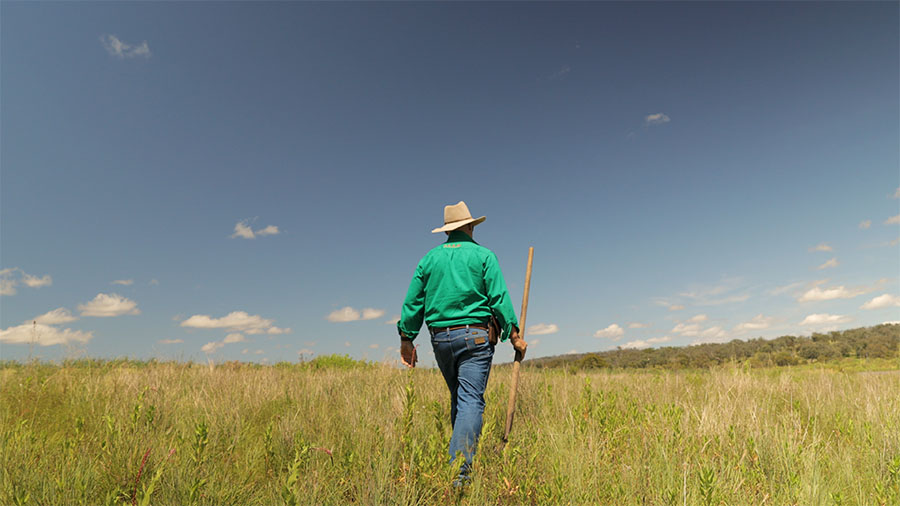The benefits of cover crops are clear, but adding them to the rotation requires careful consideration. Anna recommends growers start planning at least a year in advance, but timing is dependent on the grower's level of comfort. More conservative and risk-averse producers may want to start planning even earlier.
During the planning stage, growers will want to consider seed availability and quality.
During the planning stage, growers will want to consider seed availability and quality. Anna recommends finding a good source who can offer details on seed availability and price. Start with a single species so that management is consistent. 'When you're getting started, it's really important to be able to predict what's going to happen,' Anna says. 'Choose one species that you know: its growth habit and how to manage it.'
Another consideration when drawing up a plan is herbicide carryover, as residual herbicide could hinder germination. Broadleaf cover crops, for instance, are very sensitive to herbicides, while grasses and cereal grains are more tolerant. In a dry summer, residuals will last longer.
Nutrient management doesn't require as much advanced planning, but it still needs consideration. Species selection is an important factor to consider, particularly when planting nitrogen-hungry crops like corn.
 Getting the mix right requires planning.
Getting the mix right requires planning.
Where excess nitrogen is present, cereal grains are a good option, as the crop will capture the nitrate in the soil and keep it from leaching. However, the longer a cereal matures, the slower it is to break down. A mature crop will also tie up nitrogen as it decomposes, which could be detrimental to the following crop, particularly corn. 'We would not recommend cereal rye and corn,' Anna says. 'There are a few farmers that do it. But they make big adjustments to their nitrogen management plan. Oftentimes, they have a really healthy soil that's cycling nitrogen pretty well before they get built up to that system.'
Another consideration during the planning stage is disease and pest management. Be sure to choose a species that is not susceptible to the same diseases and pests as the following crop, says Anna. 'Treat it as if it's also a crop within your rotation. Give it the same respect you would give another crop.'
Moisture availability is another important consideration, especially in dry regions. Over time, cover crops will improve the physical properties of soil, such as water-holding capacity and infiltration. However, if there's not enough moisture available for germination, then planting a cover crop becomes a costly failure.
'It's tricky,' Anna says. 'You don't build soil health overnight or improve infiltration overnight, but in the long term.'
While cover crops are a good tool for suppressing weeds, it's essential to have a plan in place for killing the cover crop off before it goes to seed.
While cover crops are a good tool to suppress weeds, it's essential to have a plan in place for killing the cover crop off before it goes to seed. Allowing a crop to go to seed could pose a serious problem in the long term. Anna pointed to buckwheat as an example. Buckwheat goes to seed fairly quickly and is considered an allergen in some markets. Japan, for instance, will reject a shipment if it's contaminated with buckwheat seed. If growers are producing for an export market, they may want to consider this when choosing a species.
 Building soil health requires time and patience.
Building soil health requires time and patience.
Successful cover croppers will want to have a clear termination plan. Cereal rye, for example, can take off quickly in the spring. If it's not terminated swiftly, growers may find themselves managing excess residue. In some cases, however, a grower may want to leave the cover crop in place to reap additional benefits. Regardless, a clear plan is necessary.
Methods of termination include herbicides, tillage, winterkill, roller crimping and grazing. Growers who plan to use herbicides to terminate cover crops will again need to consider residuals. They'll also want to ensure they have the necessary time and equipment to terminate promptly. Depending on which species a grower chooses and the climate it's grown in, winterkill may also be an option.
In organic systems, many growers use tillage to terminate cover crops. More advanced growers may try roller crimping or even grazing. However, Anna says these methods can be more complicated and less effective.
Timing is also key, especially during busy transition times. 'Time and labour management is something that you need to consider too,' she says. 'Getting a cover crop established in the fall is really time-sensitive, especially when growers are in the middle of harvest.'
Ultimately, a plan is only as good as the goals it aims to achieve. Growers should go into cover with an open mind and a clear goal.





